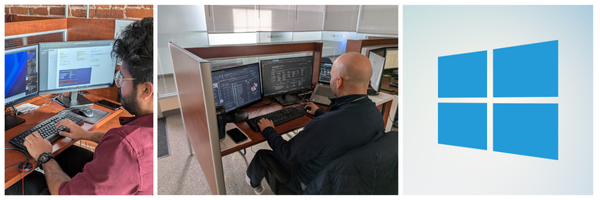When Windows 10 eventually reaches its end of life (EOL), Microsoft will stop issuing critical updates, including security patches, bug fixes and feature enhancements. Microsoft has officially announced that Windows 10 will reach its end of support on October 14, 2025. While the operating system itself will continue to function, the lack of security updates makes it increasingly vulnerable to cyber threats, malware, and other security risks. Businesses that continue using Windows 10 beyond this date will need to take extra precautions or risk exposing their systems to potential breaches and other vulnerabilities. In this blog post, we will explain why this upgrade is important and how a Managed Service Provider (MSP) can help your small or mid-sized business (SMB) stay secure with ongoing technology renewal.
Security needs to be a Business Priority
Security should be a top priority. Cyber threats are constantly evolving, and without regular security patches, any system running Windows 10 after October 2025 will become an easy target for hackers. This can be especially problematic for SMBs that store sensitive customer data, financial information, or proprietary business records. Hackers often exploit vulnerabilities in outdated software to gain unauthorized access to systems, which could result in financial losses, legal trouble, and reputational damage.
Software and Hardware Compatibility
Another consideration is software compatibility. As Microsoft phases out Windows 10, software vendors will gradually stop optimizing their applications for the operating system. Over time, businesses may find that essential tools, such as accounting software, customer relationship management (CRM) systems, and other business applications, no longer work properly or receive updates. This can lead to decreased efficiency, higher maintenance costs, and a greater risk of software failures.
Upgrading to Windows 11 is the most straightforward solution, but small businesses must first determine if their hardware is compatible. Windows 11 has stricter system requirements compared to Windows 10, including the need for newer processors, TPM 2.0 (Trusted Platform Module), and Secure Boot. Older machines that do not meet these requirements will not be able to upgrade, meaning businesses may need to invest in new hardware. This can be a significant expense, especially for companies with multiple workstations. However, using outdated hardware with an unsupported operating system is not a viable long-term solution, as it increases security risks and limits access to the latest software advancements.

Avoiding Unpredictable IT Costs
Businesses should also evaluate the costs and benefits of upgrading versus replacing hardware. If current systems are relatively new and meet Windows 11’s requirements, the upgrade process may be straightforward and cost-effective. However, if systems are aging and already showing signs of slow performance, frequent crashes, or other issues, replacing them with new machines may be a better investment in the long run as it helps avoid unpredictable costs.
IT Planning Matters: Partnering with a MSP
The transition away from Windows 10 presents an opportunity for SMBs to rethink their IT strategy. Businesses should take this time to assess their overall technology needs, cybersecurity policies, and long-term goals. Cloud-based solutions, for example, may reduce dependency on specific operating systems and provide greater flexibility. Additionally, MSPs can help businesses navigate the transition smoothly, ensuring minimal disruption and maximum security.
Partnering with a MSP empowers businesses to plan ahead which is key to avoiding last-minute disruptions. An IT Partner will take an inventory of existing hardware and software to determine compatibility with Windows 11. From there, they can create a timeline for upgrades, ensuring that the transition is completed well before Windows 10 reaches the end of support. Employees should also be trained on any new systems to ensure a smooth adoption process.
Ignoring Windows 10’s end of life is not an option for SMBs that value security, efficiency, and long-term stability. The risks associated with running an unsupported operating system far outweigh the costs of upgrading, making it essential to take proactive steps now. An MSP will help your organization plan ahead, assess options carefully, and guide informed decision-making informed decisions to security, compliance, and future preparedness. Reach out to our IT Consultants to learn how the team at Starport Managed Services can help!